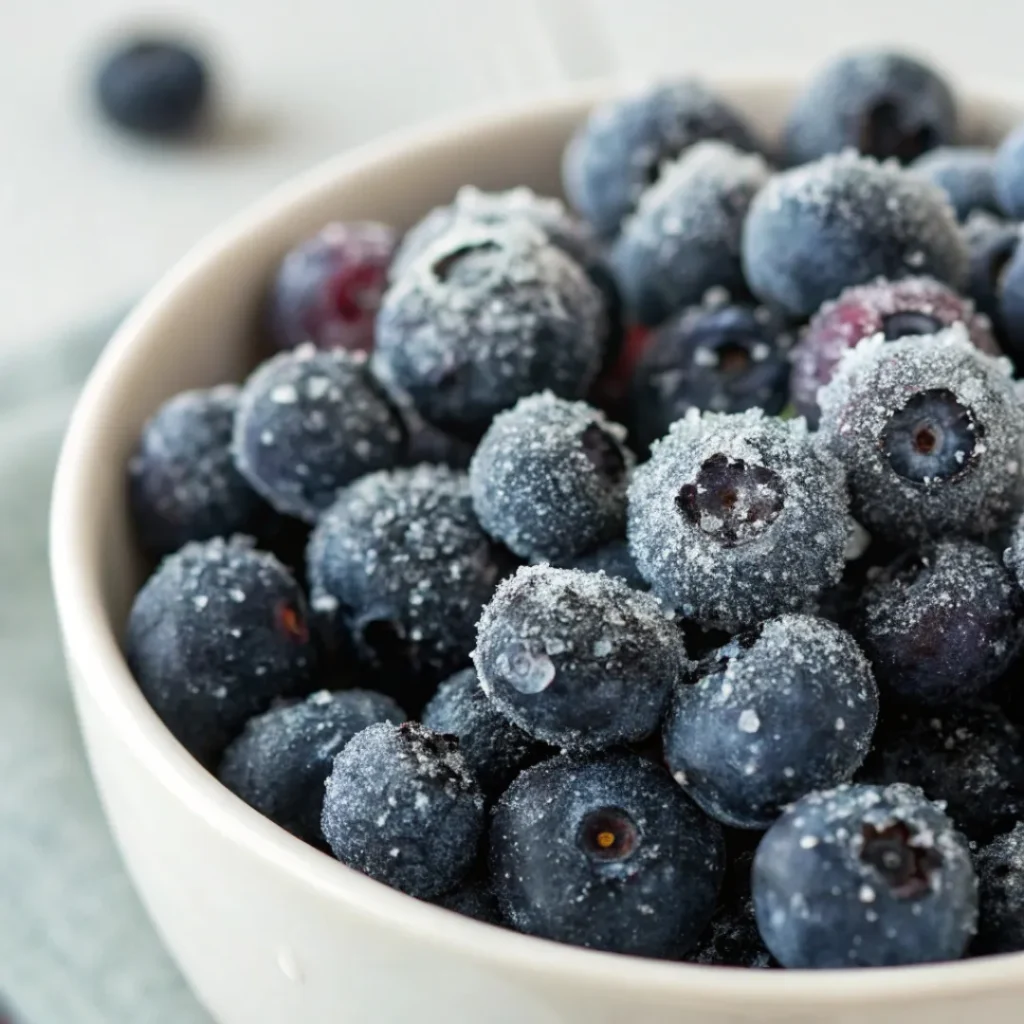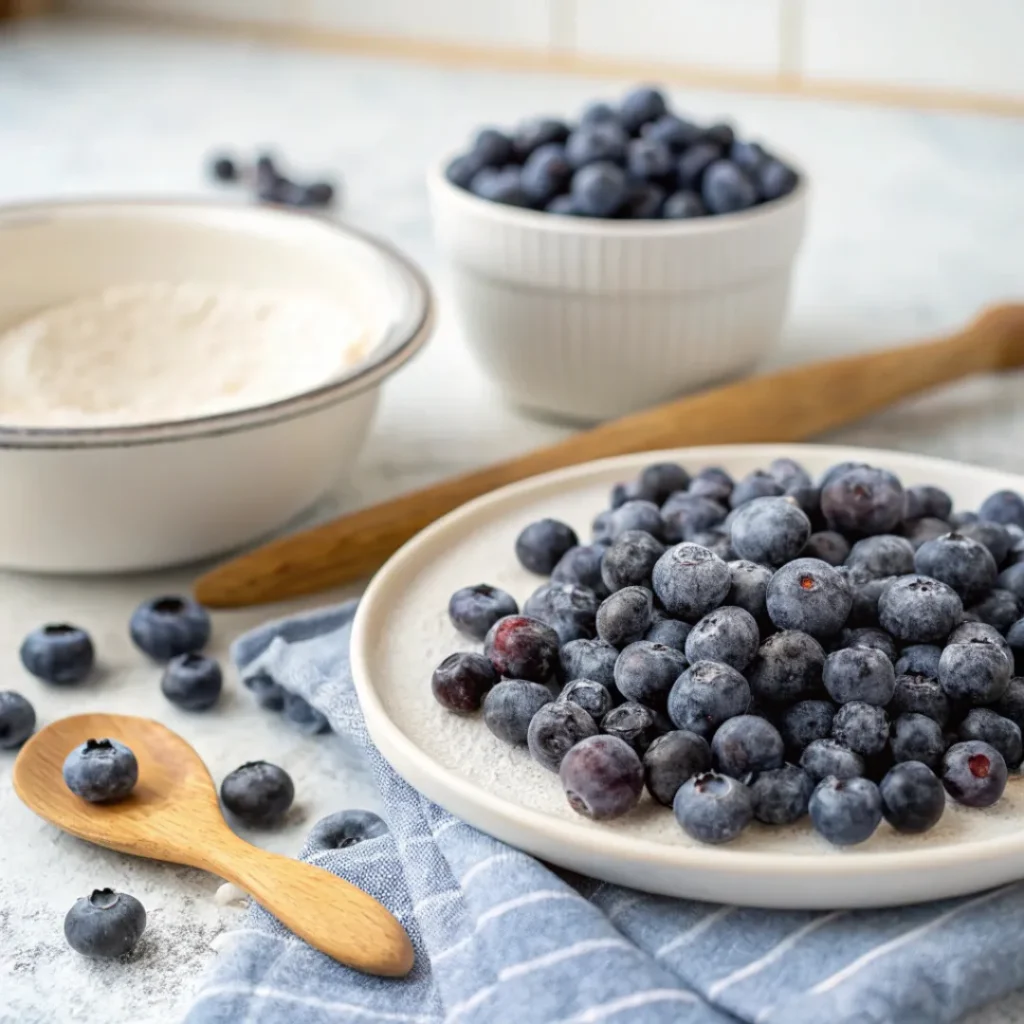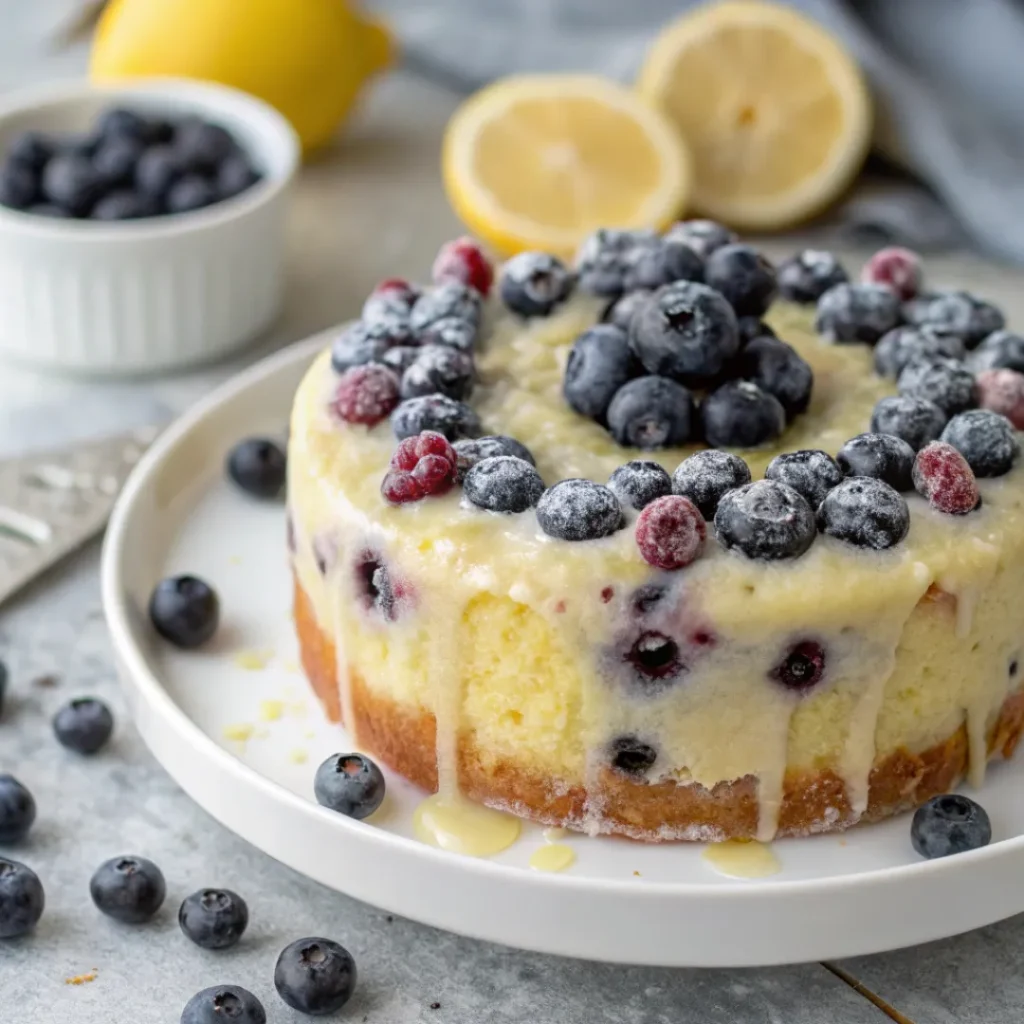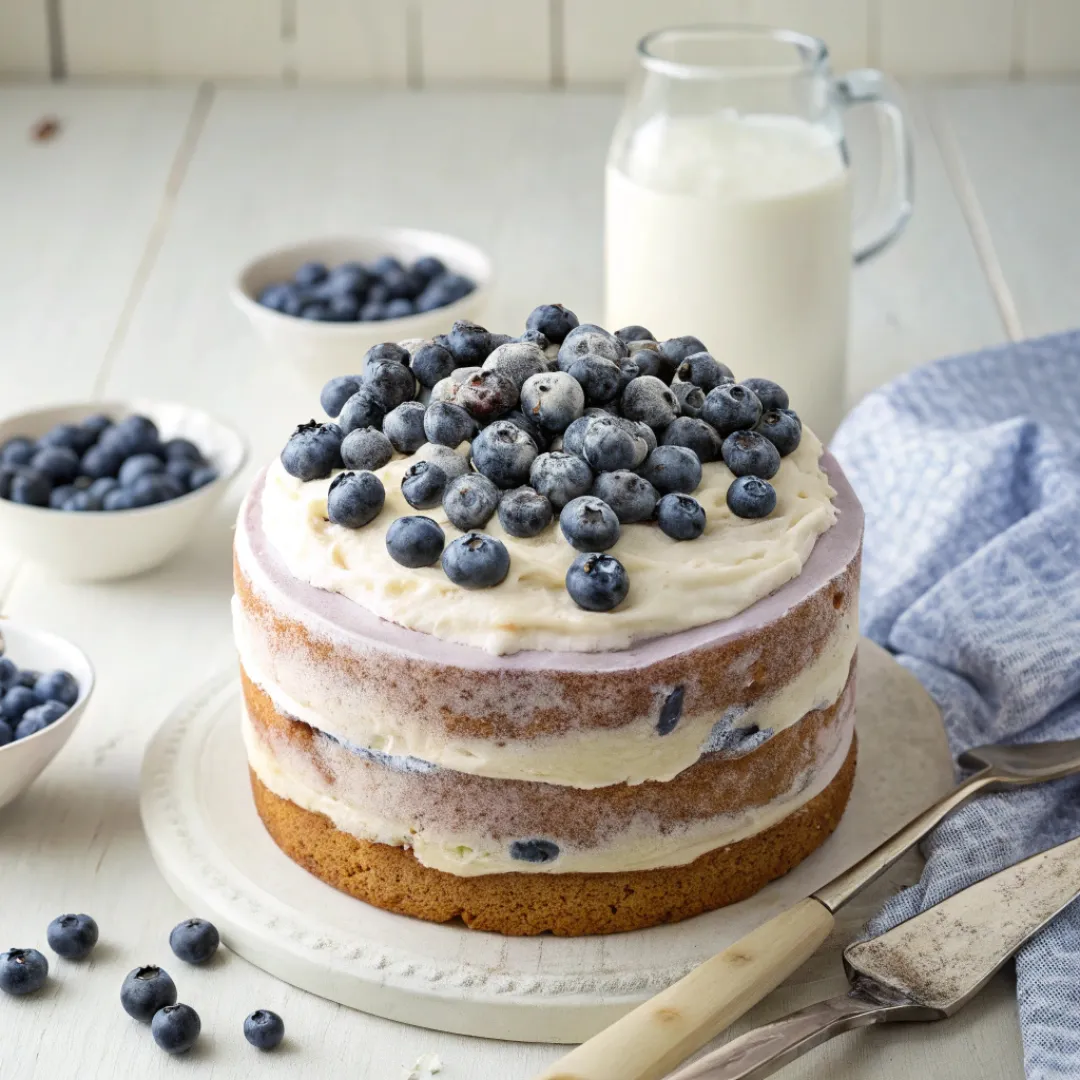Blueberries are a staple ingredient in many baked goods, offering a burst of flavor and a vibrant color that enhances the visual appeal of any dessert. Whether it’s muffins, pies, or cakes, blueberries bring a fresh, sweet-tart taste that’s hard to resist. However, fresh blueberries aren’t always available, especially when they’re out of season or too expensive. This is where frozen blueberries come into play. But can you use frozen blueberries in cakes? Absolutely! Frozen blueberries can be just as good as fresh ones when used correctly. In this comprehensive guide, we’ll explore the best practices for baking with frozen blueberries, how to avoid common issues, and provide you with a detailed recipe that showcases how to use them in a delicious lemon blueberry cake.
The Advantages of Using Frozen Blueberries
Frozen blueberries have several advantages that make them a popular choice for baking:

Year-Round Availability:
Unlike fresh blueberries, which have a limited season, frozen blueberries are available all year. This means you can enjoy blueberry-packed cakes even in the middle of winter.
Cost-Effective:
Frozen blueberries are often less expensive than fresh ones, particularly when blueberries are out of season. This makes them a budget-friendly option for baking enthusiasts.
Nutrient Retention:
Frozen blueberries are typically flash-frozen at their peak ripeness, which helps preserve their nutritional content, including antioxidants, vitamins, and minerals.
Convenience:
Having a bag of frozen blueberries in your freezer means you’re always ready to whip up a blueberry dessert without a trip to the grocery store.
Common Issues When Baking with Frozen Blueberries
Despite their convenience, baking with frozen blueberries does present some challenges. Here are the most common issues and how to address them:
- Color Bleeding: Frozen blueberries can sometimes bleed into the batter, causing it to turn an unappetizing blue or purple color. This happens because frozen blueberries release their juices as they thaw, and these juices can mix with the batter.
Solution: To prevent color bleeding, rinse the frozen blueberries under cold water several times until the water runs clear or turns a light red or purple. After rinsing, gently pat them dry with paper towels. This step helps to remove excess juice and reduce the likelihood of color bleeding.
- Sinking Blueberries: Another common issue is that frozen blueberries are heavier than the batter, causing them to sink to the bottom of the cake during baking.
Solution: To prevent sinking, coat the blueberries lightly in flour or cornstarch before folding them into the batter. This helps to create a barrier between the berries and the batter, keeping them suspended throughout the cake.
- Excess Moisture: Frozen blueberries can introduce additional moisture into the batter, which can affect the texture of the cake, making it soggy.
Solution: Properly rinsing and drying the blueberries, as mentioned earlier, helps to reduce the excess moisture they introduce into the batter. Additionally, consider slightly reducing the amount of liquid in the recipe to compensate for the moisture from the berries.
Preparing Frozen Blueberries for Baking
To ensure your cake turns out perfectly, follow these steps when preparing frozen blueberries for baking:

Rinse the Blueberries:
Place the frozen blueberries in a colander and rinse them under cold water. Continue rinsing until the water runs clear or becomes a very light shade of purple. This step is crucial for preventing the blueberries from bleeding into your batter. Rinsing the frozen blueberries under cold water helps to remove excess anthocyanins, the pigments responsible for the blue color, which can otherwise bleed into your batter.
Dry the Blueberries:
After rinsing, gently pat the blueberries dry with paper towels. Be careful not to crush them, as they can be quite fragile after thawing.
Coat with Flour or Cornstarch:
Once the blueberries are dry, place them in a bowl and sprinkle a tablespoon of flour or cornstarch over them. Toss the blueberries gently to coat them evenly. This coating helps to keep the blueberries from sinking in the batter and further reduces the risk of color bleeding.
Layer the Blueberries:
For an even distribution of blueberries throughout your cake, consider layering them within the batter. Pour half of the batter into your prepared cake pan, then add half of the blueberries. Pour the remaining batter on top, followed by the rest of the blueberries. This method ensures that the blueberries are evenly distributed and prevents them from sinking to the bottom.
Lemon Blueberry Cake with Frozen Blueberries
This Lemon Blueberry Cake is a moist and flavorful treat, perfect for any occasion. The tangy lemon pairs beautifully with sweet blueberries, and using frozen blueberries means you can enjoy this delightful cake year-round.

Ingredients
- 1.5 cups all-purpose flour
- 1.5 teaspoons baking powder
- 1.5 cups frozen blueberries (prepared as described above)
- 1 cup granulated sugar
- 2 large eggs
- ½ cup unsalted butter, softened
- ¾ cup whole milk
- 1 teaspoon vanilla extract
- ¼ cup fresh lemon juice (from one medium-sized lemon)
- Optional: 1 tablespoon lemon zest for added lemon flavor
Instructions
- Preheat the Oven: Preheat your oven to 375°F (190°C). Grease and line a 9-inch cake pan with parchment paper.
- Prepare the Blueberries: Rinse, dry, and coat the frozen blueberries with flour as described earlier. Set them aside.
- Mix the Dry Ingredients: In a large mixing bowl, combine the flour and baking powder. Mix well to ensure the leavening agent is evenly distributed throughout the flour.
- Cream the Butter and Sugar: In a separate bowl, beat the softened butter and sugar together until light and fluffy. This should take about 2-3 minutes. The creaming process is crucial as it incorporates air into the batter, helping to give the cake a light and fluffy texture.
- Add the Wet Ingredients: To the butter and sugar mixture, add the eggs one at a time, beating well after each addition. Then, add the vanilla extract and lemon juice, mixing until well combined. If you’re using lemon zest, add it at this stage for an extra punch of lemon flavor.
- Combine Wet and Dry Ingredients: Gradually add the flour mixture to the wet ingredients, alternating with the milk. Start and end with the flour mixture. Mix until just combined; overmixing can lead to a dense cake.
- Fold in the Blueberries: Gently fold the prepared frozen blueberries into the batter. Be careful not to overmix, as this can cause the blueberries to bleed into the batter.
- Bake the Cake: Pour the batter into the prepared cake pan and spread it evenly. Bake for 40-45 minutes, or until a toothpick inserted into the center of the cake comes out clean. If the cake begins to brown too quickly on top, cover it loosely with aluminum foil and continue baking until done.
- Cool and Serve: Once baked, allow the cake to cool in the pan for about 10 minutes before transferring it to a wire rack to cool completely. Once cooled, you can frost the cake or simply dust it with powdered sugar before serving.
Frosting Ideas for Lemon Blueberry Cake
While this Lemon Blueberry Cake is delicious on its own, you can elevate it further with a variety of frosting options. Here are a few ideas:
Lemon Cream Cheese Frosting
- Ingredients: 8 oz cream cheese (softened), 1/2 cup unsalted butter (softened), 3-4 cups powdered sugar, 2 tablespoons lemon juice, 1 tablespoon lemon zest, 1 teaspoon vanilla extract.
- Instructions: Beat the cream cheese and butter together until smooth. Gradually add the powdered sugar, one cup at a time, until the frosting reaches your desired consistency. Mix in the lemon juice, zest, and vanilla extract. Spread the frosting over the cooled cake.
Vanilla Buttercream
- Ingredients: 1 cup unsalted butter (softened), 4 cups powdered sugar, 1/4 cup milk, 1 teaspoon vanilla extract.
- Instructions: Beat the butter until creamy. Gradually add the powdered sugar, alternating with the milk. Add the vanilla extract and beat until the frosting is light and fluffy.
Lemon Glaze
- Ingredients: 1 cup powdered sugar, 2-3 tablespoons lemon juice.
- Instructions: Whisk the powdered sugar and lemon juice together until smooth. Drizzle the glaze over the cooled cake. This glaze adds a tangy sweetness that complements the blueberries and lemon in the cake【9†source】.
Tips for Perfect Blueberry Cakes
Here are some additional tips to help you bake the perfect blueberry cake:
Use High-Quality Ingredients:
The quality of your ingredients will greatly affect the outcome of your cake. Use fresh, high-quality butter, eggs, and vanilla extract. If possible, use organic lemons for the freshest flavor.
Room Temperature Ingredients:
Make sure all your ingredients are at room temperature before you begin. This includes eggs, butter, and milk. Room temperature ingredients mix together more easily, resulting in a smoother batter and a more evenly baked cake.
Don’t Overmix:
Overmixing the batter can result in a dense, tough cake. Mix just until the ingredients are combined. If you’re adding blueberries, gently fold them in with a spatula to avoid breaking them.
Even Baking:
To ensure your cake bakes evenly, make sure your oven is fully preheated before you put the cake in. Place the cake pan in the center of the oven to promote even heat, and avoid opening the oven door too frequently, as this can cause the temperature to fluctuate and affect the cake’s rise.
Check for Doneness:
Every oven is different, so your cake may take slightly more or less time to bake. Start checking for doneness at the 35-minute mark. Insert a toothpick into the center of the cake. If it comes out clean (with no wet batter clinging to it), your cake is done. Be mindful, however, that if the toothpick hits a blueberry, it may come out with some liquid, which is normal.
Variations of Blueberry Cake
Once you’ve mastered the basic lemon blueberry cake, you might want to experiment with different variations. Here are some ideas to get you started:
Blueberry Almond Cake
Replace some of the all-purpose flour with almond flour to add a nutty flavor to your cake. You can also top the cake with sliced almonds before baking for added texture.
Blueberry Coconut Cake
Add shredded coconut to the batter for a tropical twist. This works especially well if you substitute coconut milk for the whole milk in the recipe.
Blueberry Cheesecake Cake
Make a blueberry cheesecake layer and sandwich it between two layers of lemon cake. Top with a cream cheese frosting for a decadent dessert.
Blueberry Crumb Cake
Top your cake with a cinnamon-sugar streusel before baking to create a crunchy, sweet crumb topping.
Mixed Berry Cake
Mix in other frozen berries, such as raspberries, blackberries, or strawberries, with the blueberries for a colorful and flavorful cake.
Storing and Serving Blueberry Cake
Storing:
To keep your blueberry cake fresh, store it in an airtight container at room temperature for up to 3 days. If you want to extend its shelf life, you can refrigerate the cake, where it will last for about a week. Before serving, allow the refrigerated cake to come to room temperature for the best texture.
Freezing:
Blueberry cake can also be frozen for longer storage. Wrap the cake tightly in plastic wrap, then in aluminum foil, and store it in the freezer for up to 3 months. To thaw, place the cake in the refrigerator overnight, then bring it to room temperature before serving.
Serving Suggestions:
Blueberry cake is delicious on its own, but you can elevate it by serving it with a dollop of whipped cream or a scoop of vanilla ice cream. A dusting of powdered sugar or a drizzle of lemon glaze adds a nice finishing touch. For a more indulgent treat, serve the cake warm with a blueberry compote on the side.
Frequently Asked Questions
Can I use frozen blueberries directly in the batter without thawing them?
Yes, you can use frozen blueberries directly in the batter, but it’s advisable to rinse and dry them first to reduce color bleeding and excess moisture.
What’s the best way to prevent blueberries from sinking in my cake?
Coating the blueberries in flour or cornstarch and layering them within the batter are effective methods to prevent sinking.
Will the taste of the cake be different if I use frozen blueberries instead of fresh?
The taste will be similar, but the texture might be slightly different due to the extra moisture in frozen blueberries. Proper preparation helps minimize these differences.
How can I store leftover blueberry cake?
Store the cake in an airtight container at room temperature for up to 3 days or in the refrigerator for up to a week. The cake can also be frozen for up to 3 months.
Can I add more blueberries than the recipe calls for?
You can, but adding too many blueberries can affect the cake’s texture and baking time. If you do add more, be prepared for the possibility of a denser cake or longer baking time.
Conclusion
Using frozen blueberries in cakes is not only possible but can yield delicious results with the right preparation and techniques. Whether you’re making a simple lemon blueberry cake or experimenting with more complex recipes, understanding how to handle frozen blueberries will help you avoid common pitfalls and ensure your cakes turn out beautifully every time. With the tips and tricks outlined in this guide, you’re well-equipped to bake with confidence. So go ahead, grab those frozen blueberries from your freezer, and start baking your next masterpiece!

